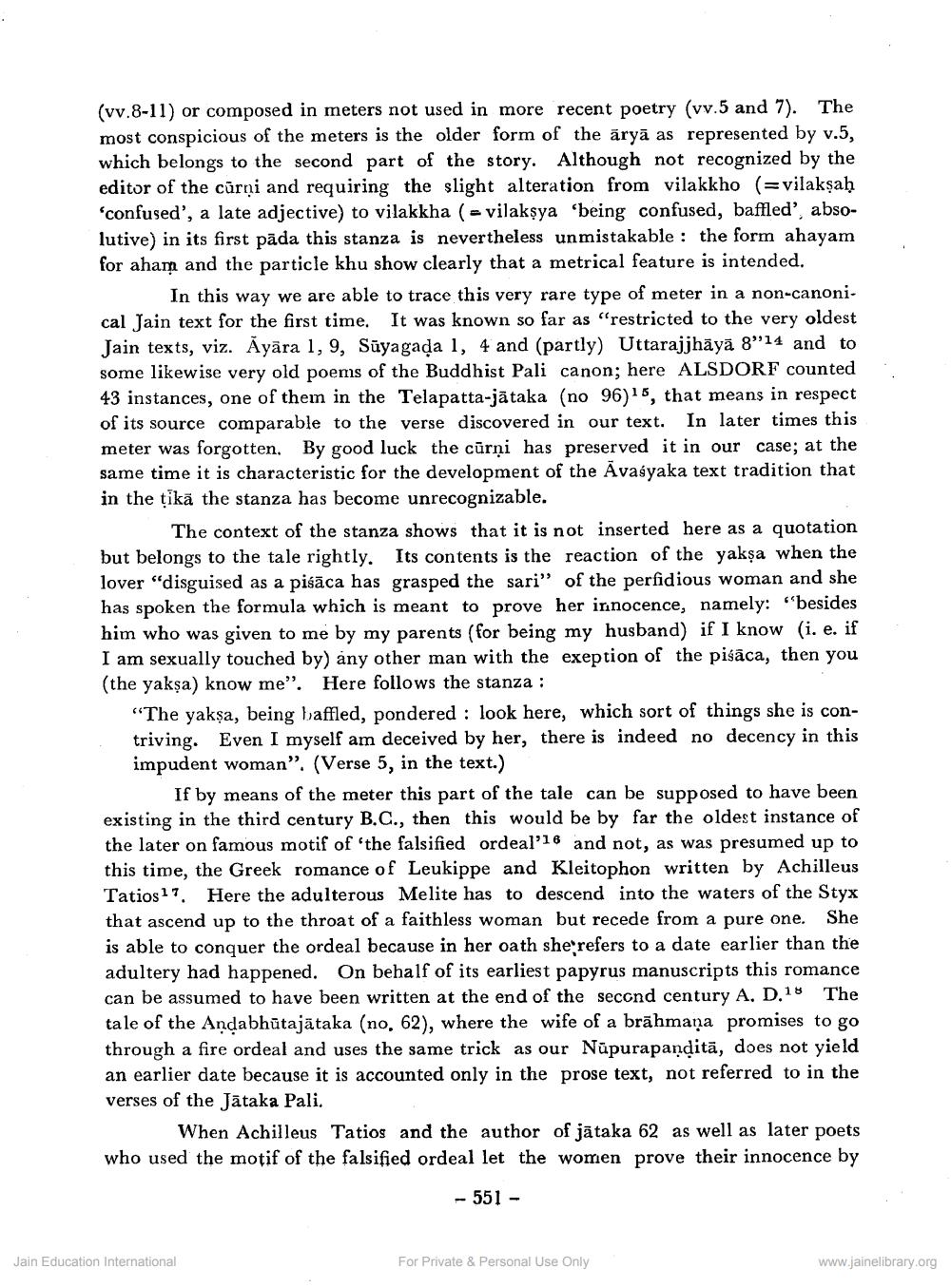Book Title: Tale of Elephant Driver in Avashyaka Version Author(s): Edhild Maite Publisher: Z_Kailashchandra_Shastri_Abhinandan_Granth_012048.pdf View full book textPage 3
________________ (vv.8-11) or composed in meters not used in more recent poetry (vv.5 and 7). The most conspicious of the meters is the older form of the āryā as represented by v.5, which belongs to the second part of the story. Although not recognized by the editor of the cūrņi and requiring the slight alteration from vilakkho (=vilakşah 'confused', a late adjective) to vilakkha ( – vilakṣya 'being confused, baffled', absolutive) in its first pāda this stanza is nevertheless unmistakable: the form ahayam for aham and the particle khu show clearly that a metrical feature is intended. In this way we are able to trace this very rare type of meter in a non-canonical Jain text for the first time. It was known so far as "restricted to the very oldest Jain texts, viz. Ayära 1, 9, Sūyagaļa 1, 4 and (partly) Uttarajjhāyā 8"14 and to some likewise very old poems of the Buddhist Pali canon; here ALSDORF counted 43 instances, one of them in the Telapatta-jātaka (no 96)15, that means in respect of its source comparable to the verse discovered in our text. In later times this meter was forgotten. By good luck the cūrņi has preserved it in our case; at the same time it is characteristic for the development of the Avasyaka text tradition that in the tikä the stanza has become unrecognizable. The context of the stanza shows that it is not inserted here as a quotation but belongs to the tale rightly. Its contents is the reaction of the yakșa when the lover "disguised as a piśāca has grasped the sari” of the perfidious woman and she has spoken the formula which is meant to prove her innocence, namely: "besides him who was given to me by my parents (for being my husband) if I know (i. e. if I am sexually touched by) any other man with the exeption of the pisāca, then you (the yakşa) know me". Here follows the stanza : “The yakşa, being baffled, pondered : look here, which sort of things she is contriving. Even I myself am deceived by her, there is indeed no decency in this impudent woman”. (Verse 5, in the text.) If by means of the meter this part of the tale can be supposed to have been existing in the third century B.C., then this would be by far the oldest instance of the later on famous motif of 'the falsified ordeal’16 and not, as was presumed up to this time, the Greek romance of Leukippe and Kleitophon written by Achilleus Tatios 17. Here the adulterous Melite has to descend into the waters of the Styx that ascend up to the throat of a faithless woman but recede from a pure one. She is able to conquer the ordeal because in her oath sherefers to a date earlier than the adultery had happened. On behalf of its earliest papyrus manuscripts this romance can be assumed to have been written at the end of the second century A. D.18 The tale of the Andabhūtajātaka (no. 62), where the wife of a brāhmaṇa promises to go through a fire ordeal and uses the same trick as our Nūpurapanditā, does not yield an earlier date because it is accounted only in the prose text, not referred to in the verses of the Jätaka Pali. When Achilleus Tatios and the author of jātaka 62 as well as later poets who used the motif of the falsified ordeal let the women prove their innocence by - 551 - Jain Education International For Private & Personal Use Only www.jainelibrary.orgPage Navigation
1 2 3 4 5 6 7 8 9 10 11 12
